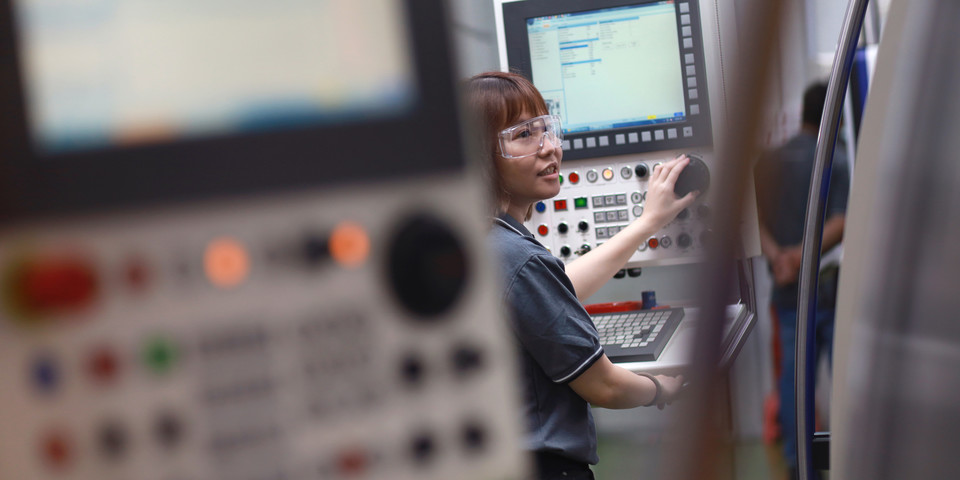Rapport: Government Subsidies in Manufacturing Sectors

För en konstruktiv debatt om subventioner är tillförlitlig och internationellt jämförbar information om vad, och hur mycket, varje part spenderar på statliga subventioner avgörande. Bristen på uppgifter om subventioner gör det svårt att bedöma deras inverkan på handel och konkurrens. Den här rapporten dokumenterar de viktigaste, tillgängliga datakällorna.
Statliga subventioner till näringslivet är en sedan länge omtvistad fråga såväl bland politiker som inom akademin. Åsiktsskillnader till trots är de flesta ekonomer överens om att vissa subventioner kan vara ekonomiskt motiverade, särskilt när de är avsedda att åtgärda marknadsmisslyckanden eller negativa externa effekter.
Subventioner för grundläggande forskning och utveckling (FoU) kan stötta företag att investera i projekt med hög social avkastning men som kanske inte är lönsamma ur ett privat perspektiv. På samma sätt kan subventioner riktade mot miljövänliga varor och tjänster stödja den gröna omställningen och bidra till bevarandet av naturliga ekosystem.
Samtidigt är det väl känt att subventioner kan ha en negativ inverkan på resursfördelningen inom och mellan länder, snedvrida den internationella handeln, skada konkurrensen och leda bort medel från andra sektorer.
En blandning av fördelaktiga och potentiellt skadliga subventioner
Det är naturligtvis inte alltid lätt att avgöra vilket som är det bästa sättet att genomföra en åtgärd. I verkligheten ser vi därför en blandning av fördelaktiga och potentiellt skadliga stödåtgärder genomföras.
En anledning till den ökade uppmärksamheten på subventioner är Kinas ekonomiska framväxt i kombination med den betydande mängd pengar och resurser som många länder ägnar åt subventioner.
För en konstruktiv debatt om subventioner är tillförlitlig och internationellt jämförbar information om vad, och hur mycket, varje part spenderar på statliga subventioner avgörande. Bristen på uppgifter om subventioner gör det svårt att bedöma deras inverkan på handel och konkurrens. Därför finns det få analyser av hur olika typer av subventioner påverka internationell handel.
Större öppenhet och gemensamma rapporteringsnormer behövs
Det har dock under de senaste åren framförts krav på större öppenhet och gemensamma rapporteringsnormer för subventioner riktade till tillverkningsindustrin, särskilt eftersom insatser för att förhindra klimatförändringar är beroende av förmågan att mäta och dokumentera globala utsläpp.
I denna rapport dokumenterar vi de viktigaste datakällorna som finns tillgängliga för att studera subventioner till tillverkningsindustrin. Vi visar också vilka typer av subventioner som är vanligast och inom vilka sektorer.
Några slutsatser som dras i denna rapport är följande:
- Uppgifterna om WTO:s anmälningar behöver göras mer användarvänliga i syfte att enklare kunna studeras. I dag finns informationen endast tillgänglig i separata dokument.
- Vi rekommenderar att OECD:s data om industrisubventioner görs tillgängliga för analytiker och forskarsamhället. OECD:s uppgifter om subventioner bör också kopplas till andra statistiska källor, t.ex. UN Comtrade.
- Databasen Global Trade Alert (GTA) är en värdefull källa till uppgifter om industri-subventioner. För de syften som diskuteras här bör GTA helst innehålla ett mätbart ekonomiskt värde.
- Med undantag för GTA-databasen har internationella organisationer dominerat arbetet med att kartlägga och uppskatta industrisubventionernas effekter. Vi anser att det skulle vara mycket värdefullt om forskarsamhället kunde engagera sig mer för att generera oberoende och granskade analyser på ett politiskt känsligt område.
Det förmodligen bästa sättet att avgöra hur eventuella subventioner ska designas är att basera politiken och åtgärderna på empirisk evidens och sund teori och de internationella organisationerna kommer att behöva stöd från forskarsamhället i detta arbete.
